The Risk Equipment Deserves More Credit: Modeling, Epistemic Opacity, and Immersion
Through examining the way hydraulic engineers employ and tinker with computational models for managing water-related risks, science and technology scholar Matthijs Kouw argues for a more reflected stand against such modeling practice. These models are indispensable as critical tools, and understanding simulation practices as a hybrid and situated form of making-do can lead to better reflection on their epistemic potential.
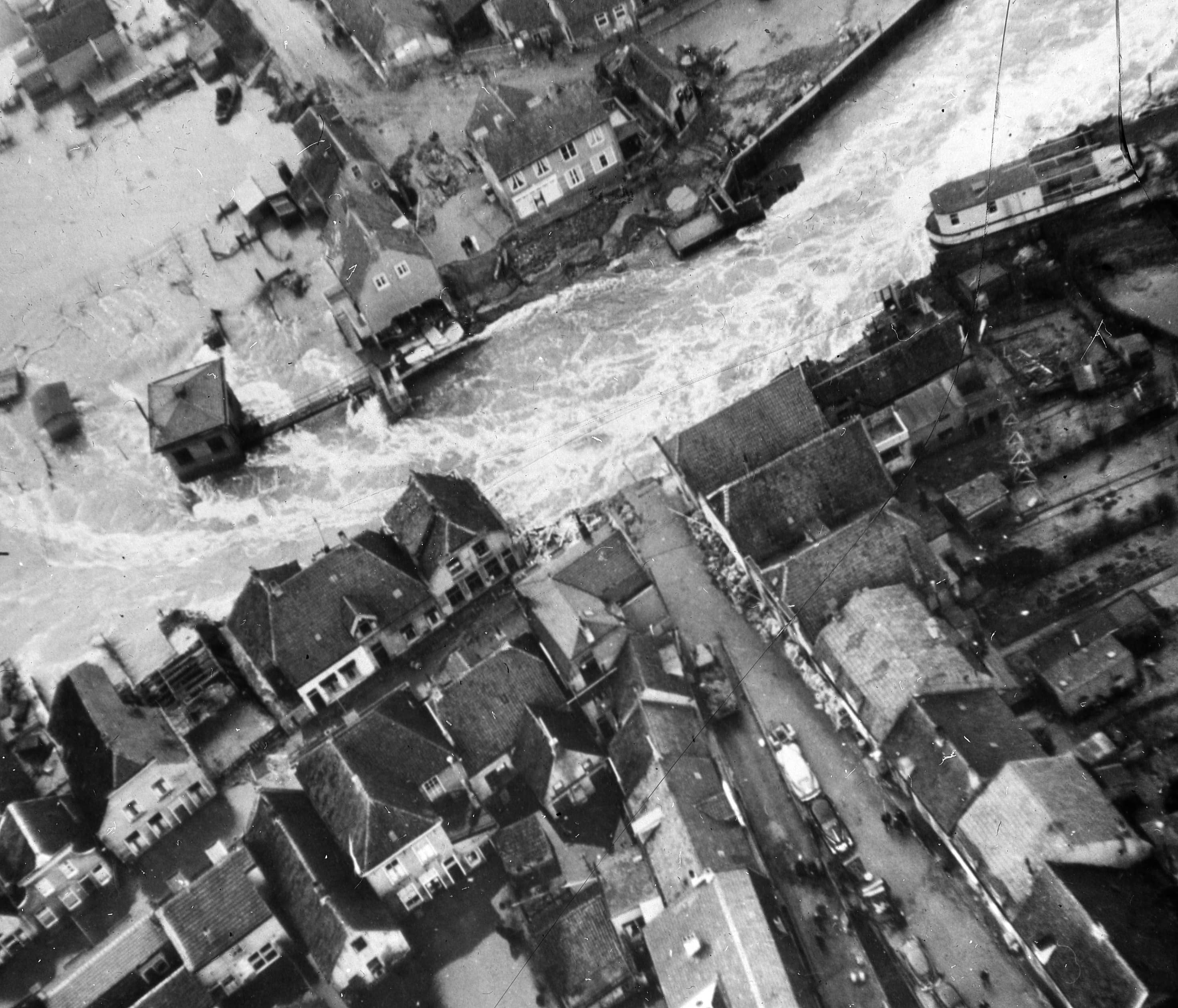
large
align-left
align-right
delete
Introduction: The Instrumental Role of Models
The history of the Netherlands is replete with water-related adversity and catastrophe (see Fig. 1). Although the Dutch have become renowned for their ability to deal with the various challenges of water, there is still ample reason for disconcert. Projected risks related to climate change include sea-level rises of up to four meters by the year 2200 and increasing river discharges, both of which pose great challenges to Dutch flood defences. In addition, climate change will negatively impact biodiversity and ecological resilience.PBL, Netherlands Environmental Assessment Agency, The Effects of Climate Change in the Netherlands: 2012. The Hague: PBL Netherlands Environmental Assessment Agency, 2013. Activities aimed at ensuring and maintaining the safety, habitability, economic welfare, and environmental sustainability of the Netherlands depend heavily on models, which are used to define, monitor, predict, counter, and communicate water-related risks.
Models are not mute instruments that objectively represent the world as it “really” is. Rather, models play an inscriptive role when it comes to understanding and dealing with water-related risks. As various studies of modeling practices have shown,See for example Gabriele Gramelsberger, “The Epistemic Texture of Simulated Worlds,” in Andrea Gleiniger and Georg Vrachliotis (eds), Simulation: Presentation Technique and Cognitive Method. Basel: Birkhäuser, 2004, pp. 83–92; G. Gramelsberger, Computerexperimente: Zum Wandel Der Wissenschaft Im Zeitalter Des Computers. Bielefeld: Transcript Verlag, 2010; G. Gramelsberger (ed.), “From Science to Computational Sciences: A Science History and Philosophy Overview,” in From Science to Computational Sciences. Zürich: Daphanes, 2011, pp. 19–44; Stefan Helmreich, “Digitizing Development: Balinese Water Temples, Complexity, and the Politics of Simulation,” Critique of Anthropology, vol. 19, no. 3 (1999), pp. 249–65; Günter Küppers and Johannes Lenhard, “Computersimulationen: Modellierungen 2. Ordnung,” Journal for General Philosophy of Science, vol. 36, no. 2 (2005), pp. 305–29; Günter Küppers et al. (eds), “Computer Simulation: Practice, Epistemology, and Social Dynamics,” in Simulation: Pragmatic Constructions of Reality. New York: Springer, 2006, pp. 3–22; Mary Morgan and Margaret Morrison (eds), “Models as Mediating Instruments,” in Models as Mediators: Perspectives on Natural and Social Sciences. Cambridge and New York: Cambridge University Press, 1999, pp. 10–37; Margaret Morrison, “Models as Autonomous Agents,” in Mary S. Morgan and Margaret Morrison (eds), Models as Mediators: Perspectives on Natural and Social Science. Cambridge: Cambridge University Press, 1999, pp. 38–65; Eric Winsberg, “Sanctioning Models: The Epistemology of Simulation,” Science in Context, vol. 12, no. 2 (1999), pp. 275–92; E. Winsberg, “Models of Success Versus the Success of Models: Reliability Without Truth,” Synthese, no. 152 (2006), pp. 1–19; E. Winsberg, “A Tale of Two Methods,” Synthese 169 (2009), pp. 575–92; E. Winsberg, Science in the Age of Computer Simulation. Chicago: Chicago University Press, 2010. the development and use of models requires that target systems are translated into physical and/or computational models that facilitate experimentation. As a result, the use of models is “inscriptive,” which can be dangerous, due to potentially dangerous assumptions, uncertainties, and blind spots. Modeling practices shape the understanding of target systems. As a result, they may have dangerous repercussions for the practices that draw on model output. For example, model-based experiments can be used to determine the adequate height of flood defences. However, the determined height may turn out to be insufficient due to the omission or inadequate representation of crucial parameters of the target system, such as the amount of water, the impact of wind, and the structural stability of flood defences.
Although the inscriptive aspects of models should be taken seriously, they should not necessarily be lamented either. Models give an idea of what may happen in futures that have some probability, or in extreme circumstances that which may not often, or perhaps never actually occur. Moreover, models enable experimentation in a way that does not interfere with real-world systems, and can be much cheaper and more efficient than experimentation in such systems. By means of models, risks are imagined and reimagined in various ways, potentially opening up new vistas for fruitful intervention in real-world systems.
In sum, modeling practice involves a razor’s edge between dangerous omissions and fruitful intervention, which deserves further elaboration. Given the instrumental role of models in equipping the Netherlands against water-related risks, I inquire how hydraulic engineers subject models to scrutiny, and to what extent such a reflexive attitude is adopted more broadly by other social groups. Failing to approach models and their inscriptive aspects in a reflexive manner may render the Netherlands (and other countries reliant on models) vulnerable to the potentially negative effects of models.
Rather than wallowing in a defeatist elaboration of the inscriptive role of models, my perhaps sobering remarks are meant as a call to arms: the equipment used to model risks deserves more credit. Models need to be appreciated as equipment of crucial importance, provided reliance on modeling is met with persistent attempts to comprehend how models shape one’s understanding of risks.
Computer Simulation and Traveling Code
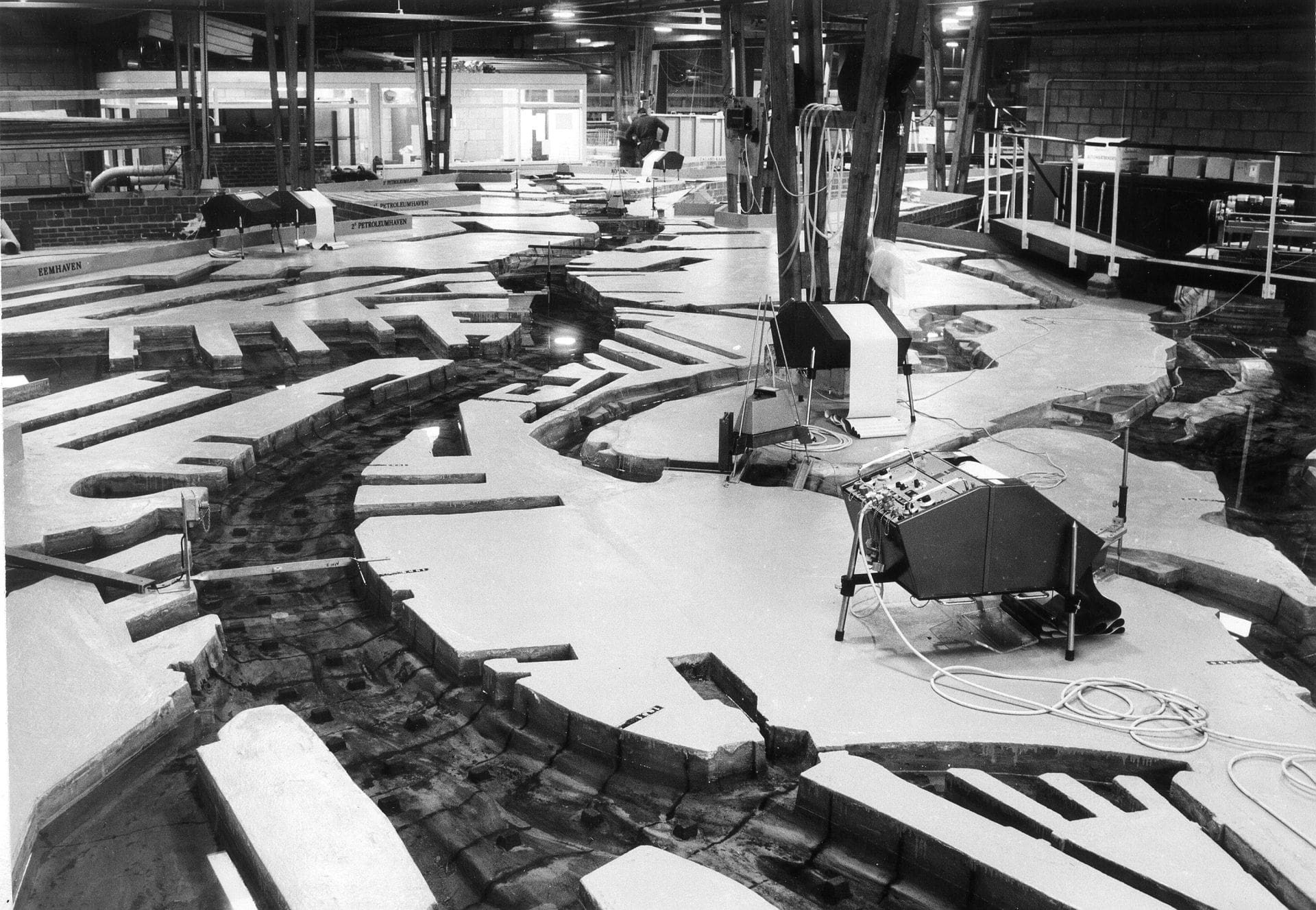
large
align-left
align-right
delete
During the twentieth century, research in hydrology and hydrodynamics in the Netherlands gradually abandoned scale modeling in favour of computational modeling. Over time, computer simulations became the dominant knowledge means of modeling hydrological and hydrodynamic phenomena.Cornelis Disco and Jan van den Ende, “‘Strong, Invincible Arguments’? Tidal Models as Management Instruments in Twentieth-Century Dutch Coastal Engineering,” Technology and Culture, vol. 44, no. 3 (2003), pp. 502–35. Costly experiments using scale models involved a time-intensive process of recreating water systems and man-made structures (see Fig. 2). Due to their gradual improvement over the years, computer simulations were embraced due to their efficiency and perceived epistemic prowess. Still, scale models are used to this very day. Depending on the extent to which the problem to be studied is known or features uncertainties, engineers advocate a “hybrid” approach that consists of both computer simulations and scale models, in particular when it comes to studying water flow near man-made structures or the border between water and land (see Fig. 3).
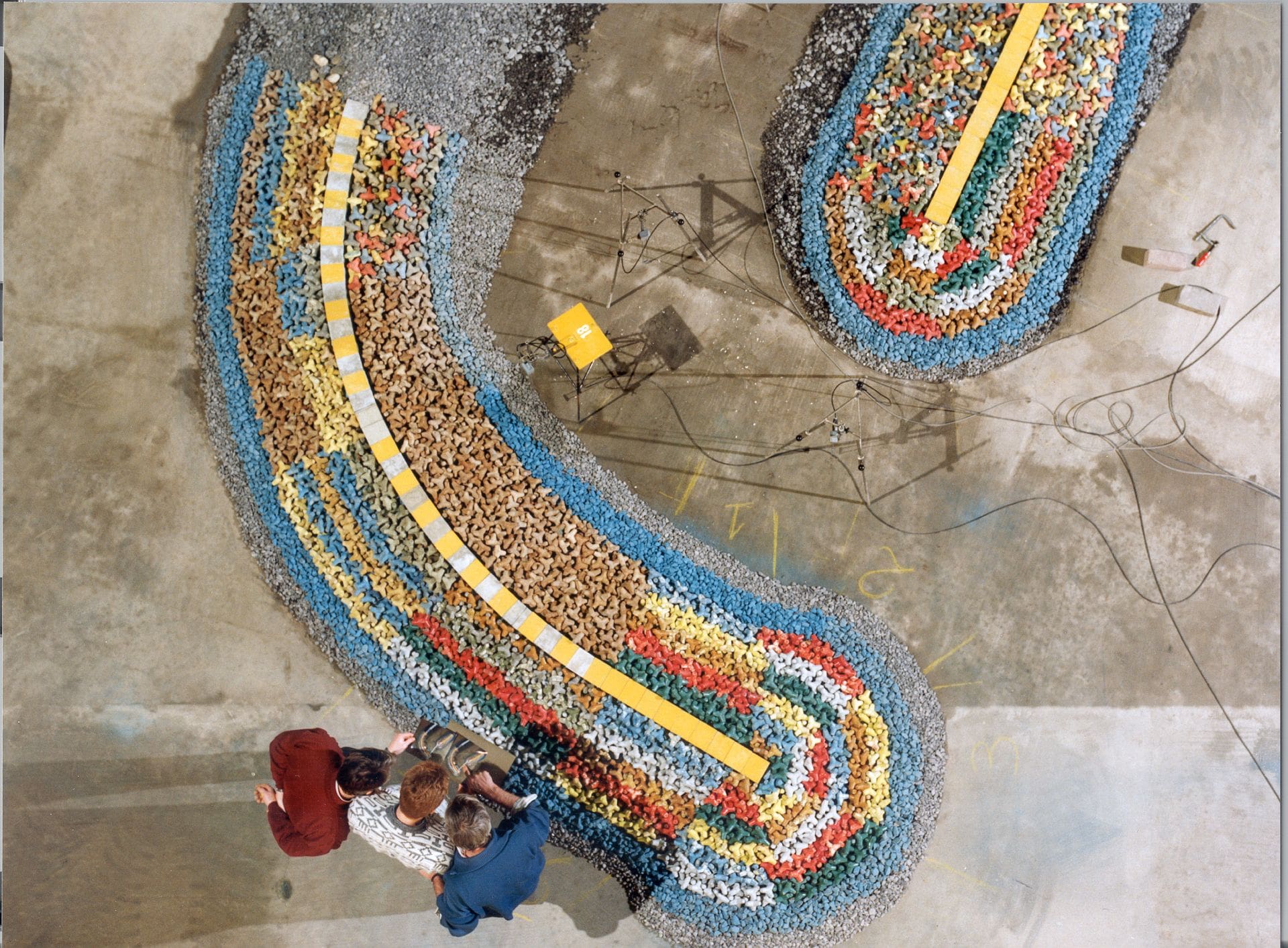
large
align-left
align-right
delete
Over time, the use of computer simulation has led to a more and more complex computer code underpinning such models, making it more and more difficult for hydraulic engineers to grasp fully the design and impact of the models they use. The increasing complexity of code is due to a variety of factors: models are developed by more and more people, many of whom are responsible for a smaller part in a larger whole. In addition, older code may not be understood because the expertise underlying it is no longer available. Finally, modelers may have the tendency to leave parts of the model unquestioned due to successful applications in the past that foster trust in the model in question.
Thus, computer simulations become “black-boxed” in the sense that their successful application renders them invisible.Bruno Latour, Pandora’s Hope: Essays on the Reality of Science Studies. Cambridge, MA: Harvard University Press, 1999, p. 304.
More generally, computer simulations enable code to travel to other contexts of development and application, exacerbating the distribution of modeling practice over a large and diverse group of social actors. The expertise of modelers is codified in the form of computer code that underpins computer simulations. This code can be shared with parties farther removed from the contexts in which development of code took place. As a result, the group of social actors involved with modeling is by no means limited to engineers actively developing models. Code may travel to consultancies, software developers, decision makers working for city governments, scientists, etc.
Present-day developments related to modeling further enable the distribution of modeling practice across a multitude of actors. First, so-called “modeling interfaces” are becoming more and more popular. Such interfaces enable a modular approach to modeling, in which model code, written by a variety of parties, is coupled and patched together to create a working model, provided these model components meet the standard of the modeling interface. Thus, model components can be combined to create some model that “works” in a pragmatic sense by providing a perceived solution to a problem. As a result, users are tempted to attribute reliability to the model in question, though extensive knowledge of the underlying model components is not required. Second, the increasing popularity of computer simulations in water governance has created a demand for models that can be used by “non-experts.” Such models need to be interactive to be sufficiently appealing and useful in practical settings, meaning underlying calculation rules are simplified to enable interaction with the model in question. Users end up using a model that meets the criteria of practical settings, but such models may not have the scientific rigor needed to create a more complete understanding of water-related phenomena. As the rising popularity of “serious games” shows, models can be praised for their interactive and playful characteristics that enable a wide variety of users to interact with complex systems (see Fig. 4).
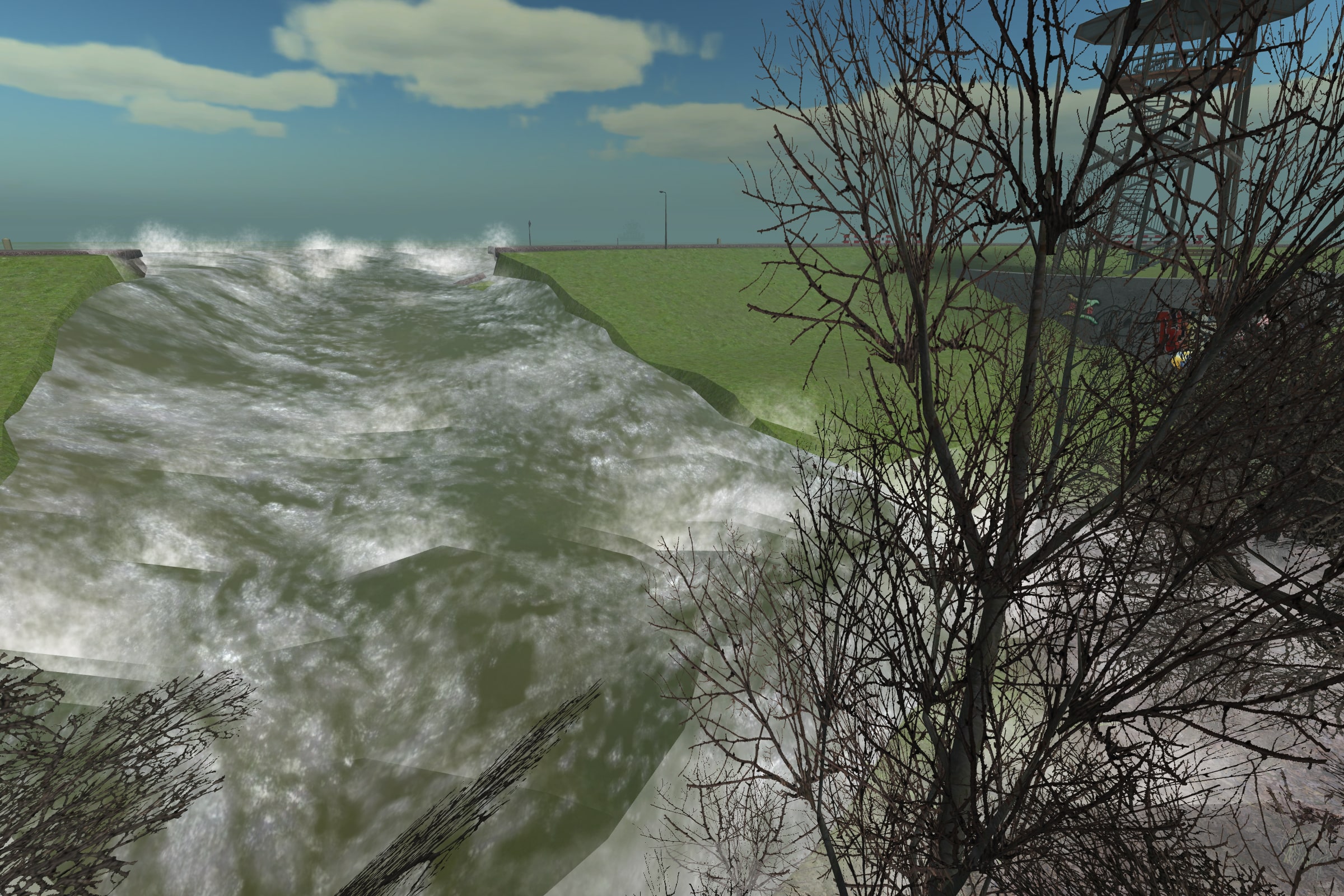
small
align-left
align-right
delete
Epistemic Opacity and Immersion
The increasing complexity of models, together with their codification in the form of computer software that involves a larger and more varied group of social actors in modeling practices, imply “epistemic opacity”:Paul Humphreys, Extending Ourselves : Computational Science, Empiricism, and Scientific Method. Cambridge. New York: Oxford University Press, 2004; P. Humphreys, “The Philosophical Novelty of Computer Simulation Methods,” Synthes, vol. 169, no. (2009), pp. 615–26. those involved with modeling practices may be unable to understand the computational techniques and underlying design of models, or may not have the desire to understand these underlying principles.
When such an inquisitive attitude is absent, those working with models straddle discovery and manipulation: models may inform the understanding of risks, but the way in which they inscribe themselves into such an understanding through their role as risk equipment is not subject to reflection. In other words, the instrumentality of models is left unquestioned. According to Sherry Turkle,Sherry Turkle, Simulation and Its Discontents. Cambridge, MA: MIT Press, 2009. the balancing act between discovery and manipulation concomitant with modeling is tipping more and more toward manipulation, since models are becoming more and more difficult to understand and more convincing at the same time (e.g. due to the use of interaction and realistic visualizations). As a result, models imply “immersion,” which can be defined more generally in terms of the engrossing, enticing, or captivating influence of technologically-mediated practices and experiences.Gordon Calleja, In-Game: From Immersion to Incorporation. Cambridge, MA: MIT Press, 2011; Matthew Causey, Theatre and Performance in Digital Culture: From Simulation to Embeddedness. London: Routledge, 2009.
It is possible to assess the extent to which those engaged with modeling are subject to immersion by asking whether epistemic opacity is something about which they are concerned. It may be the case that those engaged with modeling are unable or unwilling to reflect on what impact models have on their understanding of the world. As I show in more detail below, immersion due to epistemic opacity is by no means a given.
Tinkering
Those engaged with modeling need not necessarily succumb to immersion, provided they consider how models affect their understanding of phenomena. In this context, Till Grüne-Yanoff and Paul Weirich argue for an “experimental approach” that may counter epistemic opacity:
Because simulations are typically based on calculations that are intractable, the results of a simulation cannot be predicted at the time when the simulation is constructed or manipulated. This allows seeing the simulation as an unpredictable and opaque entity, with which one can interact in an experimental manner. However, the legitimacy of a computer simulation still relies on the analytic understanding of at least the underlying mathematical equations, if not the computation process itself. Thus, the experimental approach to simulations consists in a strategic move to “black-box” […] the known program and to interact ‘experimentally’ with the surface of the simulation.Till Grüne-Yanoff and Paul Weirich, “The Philosophy and Epistemology of Simulation: A Review,” Simulation & Gaming, vol. 41, no. 1 (2010), pp. 20–50, here p. 26.
There are cases of hydraulic engineers adopting a more “experimental” approach to models.Matthijs Kouw, Pragmatic Constructions: Simulation and the Vulnerability of Technological Cultures. Maastricht: Maastricht University, 2012; M. Kouw, “Standing on the Shoulders of Giants – and Then Looking the Other Way? Epistemic Opacity, Immersion, and Modeling in Hydraulic Engineering,” Perspectives on Science, vo. 24, no. 2 (2016), pp. 206–27. Such an approach involves the persistent questioning of a model, by examining the way it translates target systems into a formal representation that enables computation (known as a “schematization,” see Fig. 5), underlying equations, and a time-consuming process of getting to know a model by working with it for extended periods of time in different projects. Rather than taking model output for granted, hydraulic engineers often study the principles on which basis a model has been designed. More generally, this interaction with scientific instruments can be identified by the term “tinkering,”Karin Knorr Cetina, The Manufacture of Knowledge: An Essay on the Constructivist and Contextual Nature of Science. Oxford: Pergamon Press, 1981. which denotes the active engagement of scientific practitioners with their objects of study. Such objects are usually recalcitrant and require active intervention on the part of scientists.
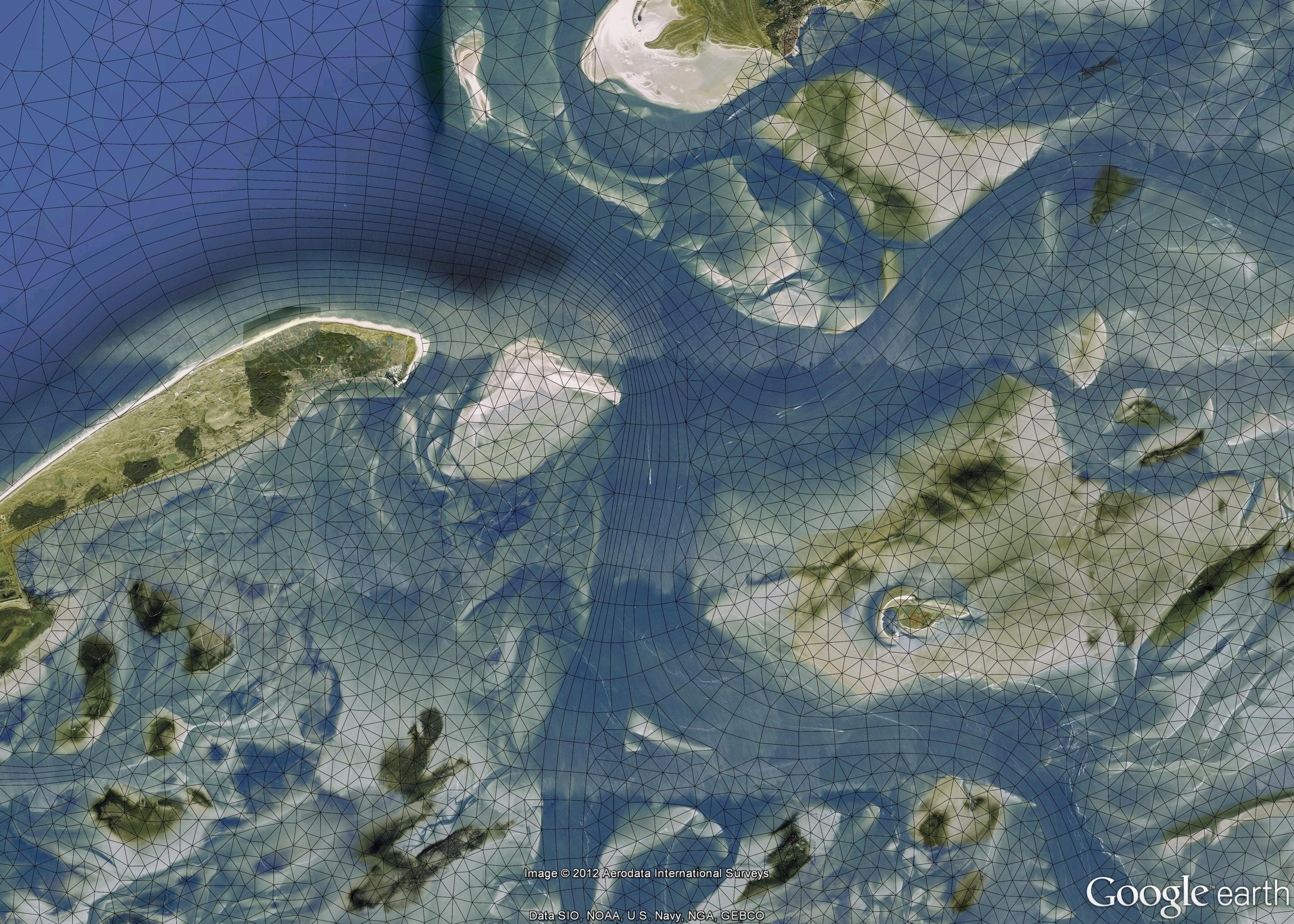
large
align-left
align-right
delete
Hydraulic engineers tinker by “interacting experimentally” with the “surface” of models. Despite this reflexive attitude toward models, immersion surfaces when hydraulic engineers or other social actors take model output for granted. Who is to say that hydraulic engineers or other social actors are indeed tempted to question the models with which they work? The everyday reality of modeling practice does not always require such an inquisitive attitude. Even though the study of water-related risks may be based on opaque models, engineers need not be hamstrung by the complexities of their risk equipment. Modeling practice, as well as other technologically mediated practices, imply a degree of ignorance, which “allows us to take our tools for granted; we don’t even notice them as objects, most of the time. We rely on their ‘equipmental effect’, forgetting that this efficacy is itself the result of a vast network of alliances, mediations, and relays.”Steve Shaviro, “The Universe of Things,” Theory & Event, vol. 14, no. 3 (2011)(DOI:10.1353/tae.2011.0027). Similarly, the issue of immersion in modeling practice concerns the fact that those involved with modeling are thrown into and entangled in technological practices, which involves working with increasingly opaque models. Abandon all hope, ye who enter the domain of modeling practice?
Mastering Technology?
Rather than lamenting the inscriptive effects of models beforehand, a concern with immersion as a result of modeling practice, should be met by subjecting risk equipment to critical and persistent scrutiny. This can be achieved by studying the various ways in which practitioners interact experimentally with risk equipment by means of tinkering. As indicated above, hydraulic engineers adopt reflexive forms of modeling practice in the face of epistemic opacity, making a pessimistic view of models unnecessary.
This said, nonetheless, there is always a degree of ignorance within which reflexive forms of modeling take place: technologies are not so much mastered, as subjected to experimental interaction, which does not guarantee a complete and exhaustive understanding of a model. In this scenario, mastery of technologies may not be the most eloquent response to the risk of immersion:
[…] the belief that we can humanize machines by slowing them down, refraining from their continuous use, alternating their use with authentic home- and handcrafting, or using them on a less massive scale […] the point is not to make the same machine do the same thing more slowly, at a human pace or in a friendlier way, but to make machines do things differently […] We should look carefully at how human action organizes itself around machinery, how machinery organizes and even institutionalizes action, and how it slowly takes away or enables freedom.Lars Spuybroek, The Sympathy of Things: Ruskin and the Ecology of Design. Rotterdam: V2 Publishing, 2011, p. 49.
Tinkering is a form of reflexivity that leads to engagement with epistemically opaque models. Since it is unlikely that the trends that have established epistemically opaque models can be reversed, tinkering rather than mastery needs to be fostered. Although the danger of epistemic opacity was signalled in the early days of software development, present-day challenges of hydraulic engineering do not bode well for Edsger Dijkstra’s suggestion to “confine ourselves to the design and implementation of intellectually manageable programs.”Edsger W. Dijkstra, “The Humble Programmer,” in R. L. Ashenhurst and S. Graham (ed.), ACM Turing Award Lectures: The First Twenty Years, 1966 to 1985. New York: ACM Press, 1987, pp. 17–32. As indicated above, modeling practice is distributed over a larger and more varied group of social actors.
Reflexivity and tinkering need to be interpreted as a form of situated making-do rather than attempts to achieve mastery over technologies. Rather than taking a defeatist stance towards modeling, the ways in which people actually work with models needs to be studied. Such study affords a criticism that is more grounded in actual practices, thereby able to suggest more engaging forms of interaction with models.
Conclusion
There are strong indications that a reflexive attitude to modeling is primarily adopted by engineers responsible for model development. Actors outside the realm of model development, such as consultants, decision makers, and policymakers, appear to have substantial confidence in models, and have a lesser tendency to take model output with a grain of salt, which is something lamented by engineers involved with modeling. The question remains how more reflexive forms of modeling practice can be adopted more broadly. Although the implementation of “good modeling practice” (i.e. programming methods that foster more engagement with code underlying models) can be a way to achieve more reflexivity, it is unlikely all social groups involved with modeling practice will find the opportunity to concern themselves with the nitty-gritty details of modeling and software.
Models are of profound importance when it comes to preparing for futures in the near and not so near future, and therefore deserve substantial credit. The fact that models are risk equipment on which more and more aspects of today’s profoundly technological cultures depend is all the more reason to engage with them, rather than pushing them away as a mischievous source of simulacra. Instead of advocating a dismissive attitude to models due to their inscriptive effects, I propose the study of modeling practice as a more fruitful way to engage with models as risk equipment. Thus, an understanding of how knowledge about risks is produced can be achieved. Articulating how models envisage risks is a fruitful way forward in meeting the myriad challenges of tomorrow.